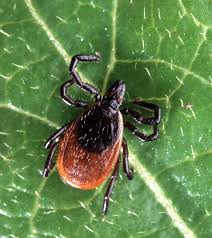What You Need to Know About Lyme Disease

Introduction
Lyme disease is a growing concern in many parts of the world, particularly in regions where theIxodes tick, commonly known as the deer tick, thrives. This vector-borne illness is caused by the bacterium Borrelia burgdorferi and can lead to severe health complications if left untreated. As awareness increases about Lyme disease, it is crucial for the public to understand its symptoms, transmission, and preventative measures, especially given recent spikes in reported cases across various countries.
Understanding Lyme Disease
Lyme disease is often transmitted to humans through the bite of infected ticks. Research conducted by the Centres for Disease Control and Prevention (CDC) shows that Lyme disease cases have been reported primarily in the northern and northeastern regions of the United States, with a resurgence noted in the late spring and summer months when people are more likely to interact with tick-friendly environments.
Symptoms can vary widely, but early indications often include fever, fatigue, headaches, muscle pain, and the characteristic bull’s-eye rash known as erythema migrans. If left untreated, Lyme disease can progress to more severe issues, including neurological problems and joint pain, which can persist for months or even years.
Recent Developments and Statistics
According to a report by the National Institute of Allergy and Infectious Diseases (NIAID), approximately 300,000 cases of Lyme disease are diagnosed in the United States annually. This figure may be underrepresented due to misdiagnosis or lack of awareness. Moreover, studies indicate an increase in the geographical range of Lyme disease, with cases now appearing in regions that were previously unaffected.
Preventative Measures and Treatment Options
Preventing Lyme disease largely revolves around minimising exposure to ticks. Public health officials recommend wearing protective clothing, using tick repellents containing DEET, and conducting thorough tick checks after outdoor activities, especially in heavily wooded or grassy areas.
If diagnosed early, Lyme disease is typically treated effectively with a course of antibiotics, and most patients recover completely. However, those with persistent symptoms may require long-term treatment strategies, which are currently under review and research.
Conclusion
Lyme disease represents a significant public health challenge with its increasing prevalence. It is vital to stay informed about the risks, symptoms, and prevention strategies related to Lyme disease. As authorities and researchers continue to study this illness, increased awareness may contribute to enhanced prevention and improved treatment methodologies in the future. For more information, individuals are encouraged to consult health professionals or visit trusted health organisation websites.








